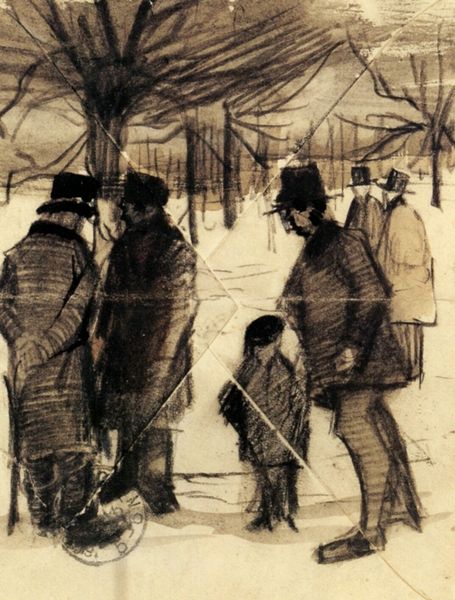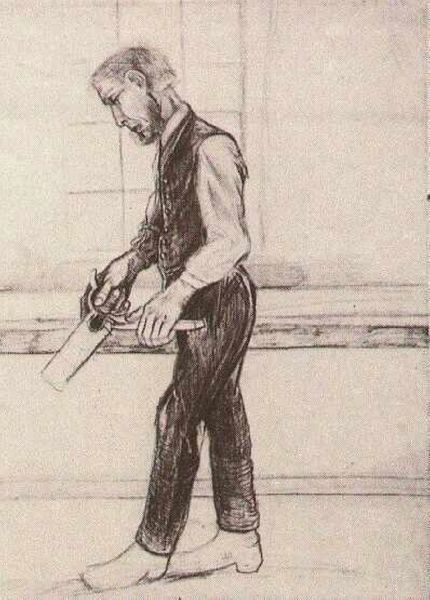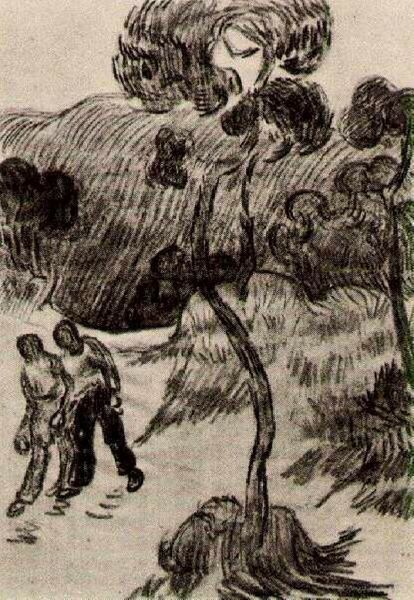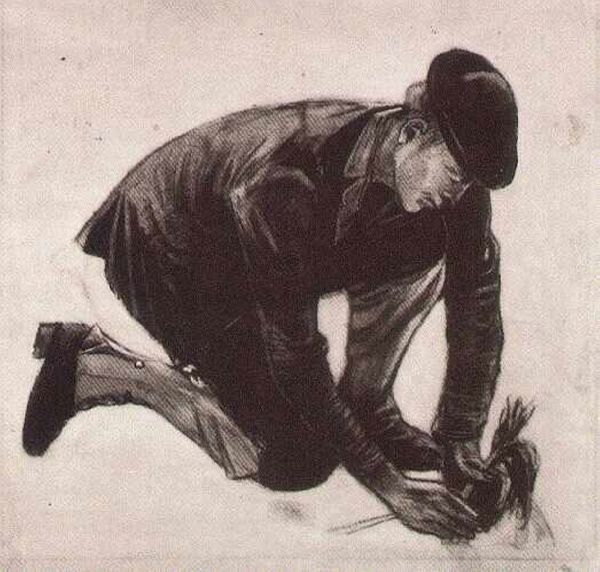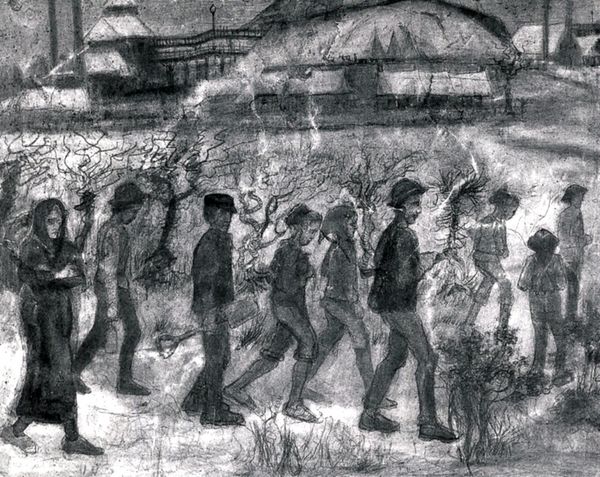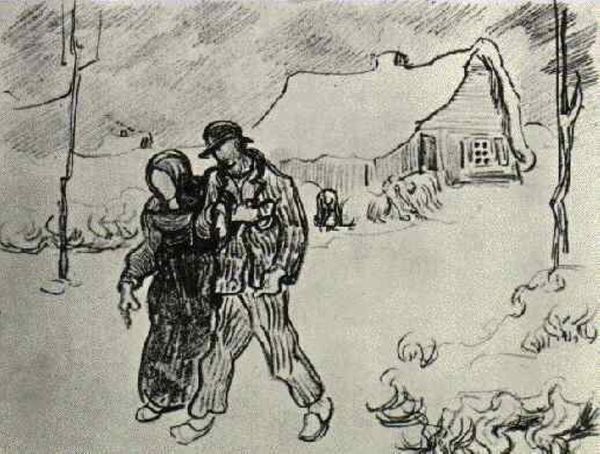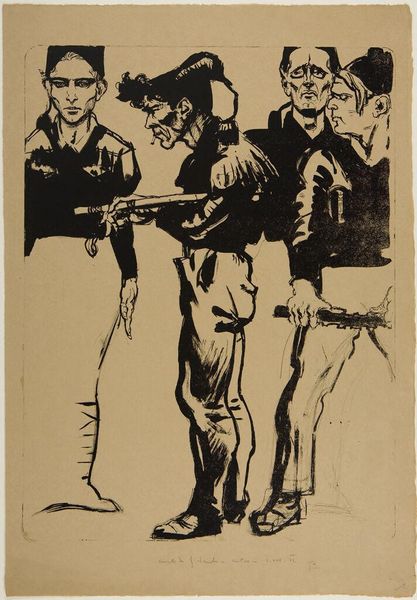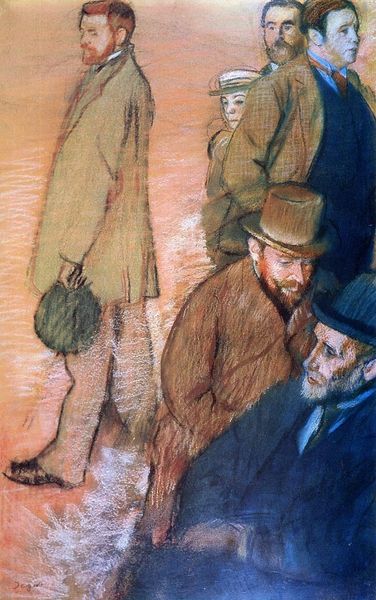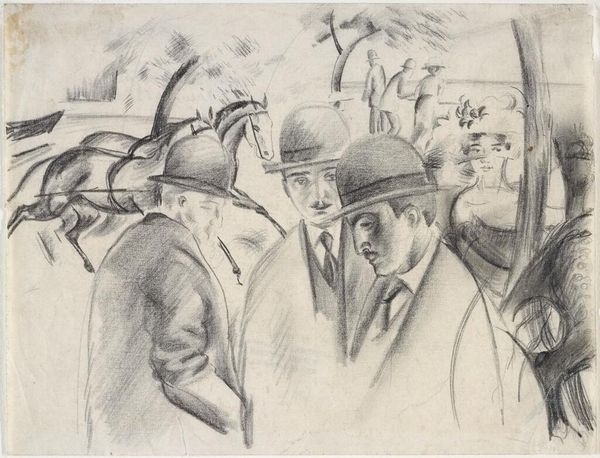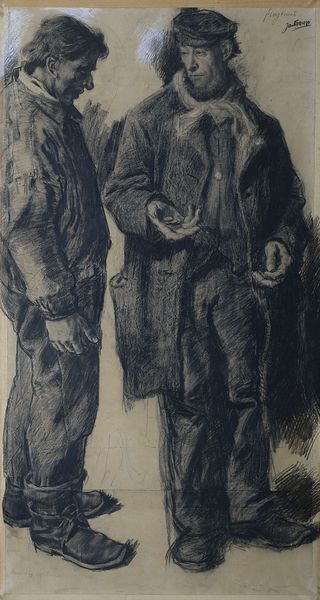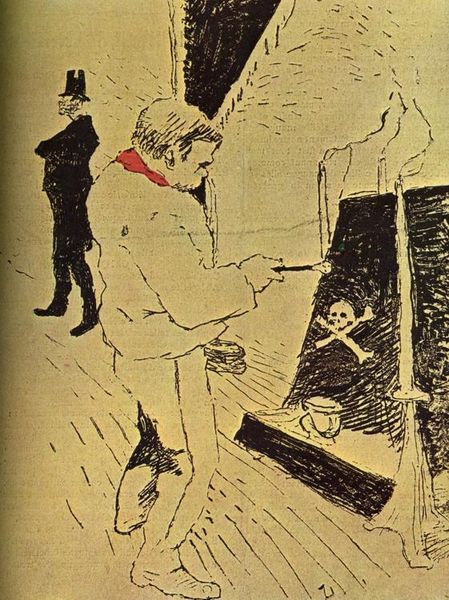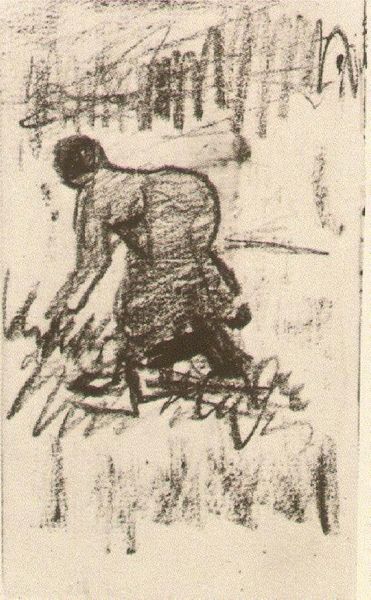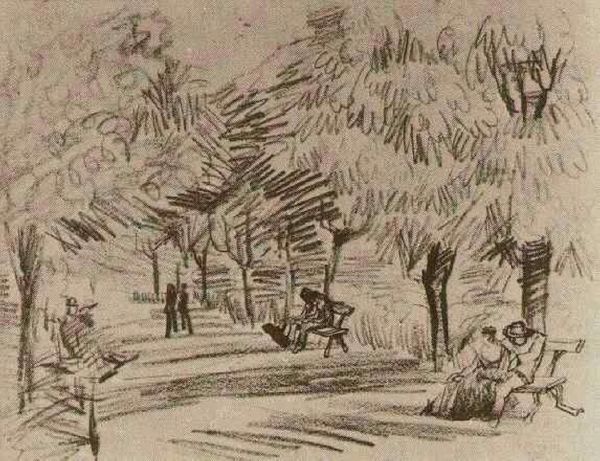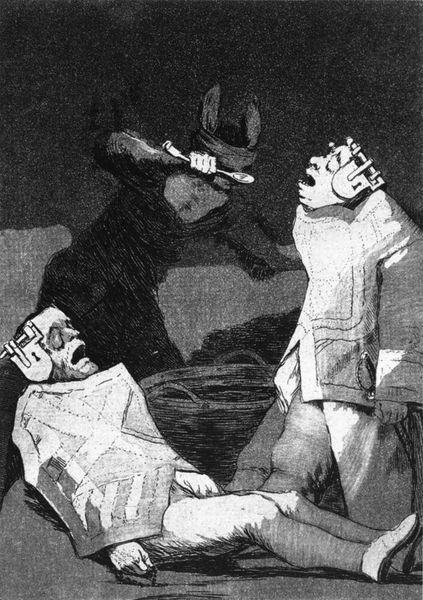
drawing, charcoal
#
drawing
#
dutch-golden-age
#
impressionism
#
pencil sketch
#
landscape
#
charcoal drawing
#
figuration
#
pencil drawing
#
pen-ink sketch
#
charcoal
Copyright: Public domain
Editor: So, this is "Three Woodcutters Walking," a charcoal and pencil drawing by Vincent van Gogh from 1884. There's a starkness to it that I find immediately compelling, and the monochromatic palette really enhances that mood. What catches your eye when you look at this piece? Curator: You know, it's interesting how van Gogh takes such an ordinary subject and imbues it with so much…weight. It's more than just three figures walking. I sense their weariness, the repetition of their days etched into each line of the charcoal. Notice how the trees almost mirror the figures, becoming part of this somber procession. There’s a bleakness here, an unflinching look at the lives of these laborers. Do you feel that too? Editor: I do, now that you point it out. The mirroring is really effective. I hadn’t quite connected the trees to their figures, but now it gives a sort of feeling of oppression; everything seems heavy. Was he trying to make a social statement, maybe? Curator: Perhaps. Or perhaps he was simply observing, bearing witness. But van Gogh’s vision, as you know, was never simply objective. He translated what he saw through the prism of his own empathy, his own struggles. The rawness of the medium, the stark contrasts…it all speaks to a deep connection with his subjects. The act of walking is, in this piece, transformed from mundane travel to laborious passage of the everyday, isn't it? Editor: It definitely is! Seeing it that way makes it even more profound. I'll never look at a sketch the same way again! Curator: Indeed. Van Gogh opens our eyes to seeing poetry where we expect the pedestrian.
Comments
No comments
Be the first to comment and join the conversation on the ultimate creative platform.
